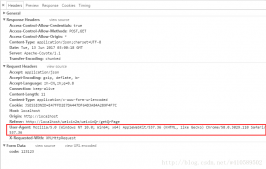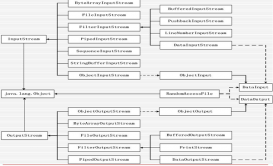源代码版本 : spring-webmvc-5.1.4.RELEASE
概述
PathMatcher是Spring的一个概念模型接口,该接口抽象建模了概念"路径匹配器",一个"路径匹配器"是一个用于路径匹配的工具。它的使用者是 :
|
1
2
3
|
org.springframework.core.io.support.PathMatchingResourcePatternResolverorg.springframework.web.servlet.handler.AbstractUrlHandlerMappingorg.springframework.web.servlet.mvc.WebContentInterceptor |
Spring框架自身对概念模型接口也提供了一个缺省的实现AntPathMatcher,用于匹配Ant风格的路径。
PathMatcher接口源代码
PathMatcher接口源代码如下 :
|
1
2
3
4
5
6
7
8
9
10
11
12
13
14
15
16
17
18
19
20
21
22
23
24
25
26
27
28
29
30
31
32
33
34
35
36
37
38
39
40
41
42
43
44
45
46
47
48
49
50
51
52
53
54
55
56
57
58
59
60
61
62
63
64
65
66
67
68
69
70
71
72
73
74
75
76
77
78
79
80
81
82
83
84
85
86
87
88
89
90
91
|
package org.springframework.util;import java.util.Comparator;import java.util.Map;public interface PathMatcher { /** * Does the given path represent a pattern that can be matched * by an implementation of this interface? * 判断指定的路径 path 是否是一个 pattern(模式) * 如果返回值是 false,也就是说 path 不是一个模式,而是一个静态路径(真正的路径字符串), * 那么就不用调用方法 #match 了,因为对于静态路径的匹配,直接使用字符串等号比较就足够了。 * @param path the path String to check * @return true if the given path represents a pattern */ boolean isPattern(String path); /** * Match the given path against the given pattern, * according to this PathMatcher's matching strategy. * 根据当前 PathMatcher 的匹配策略,检查指定的径 path 和指定的模式 pattern 是否匹配 * @param 用于检测路径字符串是否匹配于某个模式时所用的模式 * @param path 需要被检测的路径字符串 * @return true 表示匹配, false 表示不匹配 */ boolean match(String pattern, String path); /** * Match the given path against the corresponding part of the given * pattern, according to this PathMatcher's matching strategy. * 根据当前 PathMatcher 的匹配策略,检查指定的径 path 和指定的模式 pattern 是否之间 * 是否为前缀匹配 * @param pattern the pattern to match against * @param path the path String to test * @return true 表示匹配, false 表示不匹配 */ boolean matchStart(String pattern, String path); /** * Given a pattern and a full path, determine the pattern-mapped part. * 给定一个模式 pattern 和一个全路径 path,判断路径中和模式匹配的部分。 * * This method is supposed to find out which part of the path is matched * dynamically through an actual pattern, that is, it strips off a statically * defined leading path from the given full path, returning only the actually * pattern-matched part of the path. * 该方法用于发现路径中的哪一部分是和模式能动态匹配上的部分。它会去除路径中开头静态部分, * 仅仅返回那部分真正和模式匹配的上的部分。 * 例子 : "myroot/*.html" 为 pattern , "myroot/myfile.html" 为路径, * 则该方法返回 "myfile.html". * 具体的检测规则根据当前 PathMatcher 的匹配策略来顶。 * A simple implementation may return the given full path as-is in case * of an actual pattern, and the empty String in case of the pattern not * containing any dynamic parts (i.e. the pattern parameter being * a static path that wouldn't qualify as an actual #isPattern pattern. * A sophisticated implementation will differentiate between the static parts * and the dynamic parts of the given path pattern. * @param pattern the path pattern * @param path the full path to introspect * @return the pattern-mapped part of the given path * (never null) */ String extractPathWithinPattern(String pattern, String path); /** * Given a pattern and a full path, extract the URI template variables. URI template * variables are expressed through curly brackets ('{' and '}'). * 给定一个模式和一个路径,提取其中的 URI 模板变量信息。URI模板变量表达式格式为 "{variable}" * * 例子 : pattern 为 "/hotels/{hotel}" ,路径为 "/hotels/1", 则该方法会返回一个 map , * 内容为 : "hotel"->"1". * @param pattern the path pattern, possibly containing URI templates * @param path the full path to extract template variables from * @return a map, containing variable names as keys; variables values as values */ Map<String, String> extractUriTemplateVariables(String pattern, String path); /** * Given a full path, returns a Comparator suitable for sorting patterns * in order of explicitness for that path. * The full algorithm used depends on the underlying implementation, * but generally, the returned Comparator will sort a list so that more * specific patterns come before generic patterns. * @param path the full path to use for comparison * @return a comparator capable of sorting patterns in order of explicitness */ Comparator<String> getPatternComparator(String path); /** * Combines two patterns into a new pattern that is returned. * The full algorithm used for combining the two pattern depends on the underlying implementation. * 合并两个模式。具体合并的算法由实现类决定。 * @param pattern1 the first pattern * @param pattern2 the second pattern * @return the combination of the two patterns * @throws IllegalArgumentException when the two patterns cannot be combined */ String combine(String pattern1, String pattern2);} |
从接口代码来理解概念还是有些抽象,下面我们列举一些基于实现类AntPathMatcher的例子来增强理解 。
AntPathMatcher使用例子
|
1
2
3
4
5
6
7
8
9
10
|
AntPathMatcher antPathMatcher = new AntPathMatcher();antPathMatcher.isPattern("/user/001");// 返回 falseantPathMatcher.isPattern("/user/*"); // 返回 trueantPathMatcher.match("/user/001","/user/001");// 返回 trueantPathMatcher.match("/user/*","/user/001");// 返回 trueantPathMatcher.matchStart("/user/*","/user/001"); // 返回 trueantPathMatcher.matchStart("/user/*","/user"); // 返回 trueantPathMatcher.matchStart("/user/*","/user001"); // 返回 falseantPathMatcher.extractPathWithinPattern("uc/profile*","uc/profile.html"); // 返回 profile.htmlantPathMatcher.combine("uc/*.html","uc/profile.html"); // uc/profile.html |
spring的路径匹配工具 AntPathMatcher
包路径:
|
1
|
org.springframework.util.AntPathMatcher |
工具:
|
1
|
AntPathMatcher antPathMatcher = new AntPathMatcher(); |
以下代码为本人使用过的路径匹配工具代码
方便以后项目中使用参考:
|
1
2
3
4
5
6
7
8
9
|
//不需要鉴权的接口 private Boolean excludePathFilter(String path) { PathProperties pathProperties = (PathProperties) PathProperties.applicationContext.getBean("pathProperties"); List<String> excludePathPatterns = pathProperties.getExcludePathPatterns(); if(CollectionUtils.isEmpty(excludePathPatterns)){ return false; } return excludePathPatterns.stream().anyMatch(pattern -> antPathMatcher.match(pattern, path)); } |
核心代码是这一行
|
1
|
excludePathPatterns.stream().anyMatch(pattern -> antPathMatcher.match(pattern, path)) |
获取到需要排除鉴权接口列表的接口,然后通过 AntPathMatcher 的 match 方法去匹配路径,不需要做鉴权的接口就会被匹配到,然后继续执行非鉴权的业务流程。
以上为个人经验,希望能给大家一个参考,也希望大家多多支持服务器之家。
原文链接:https://andyboke.blog.csdn.net/article/details/88884286















